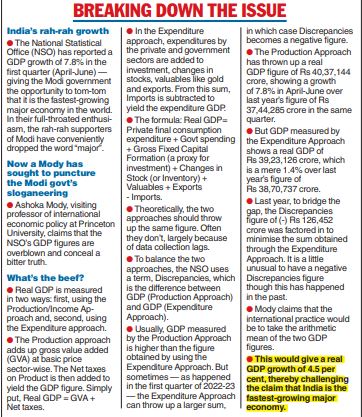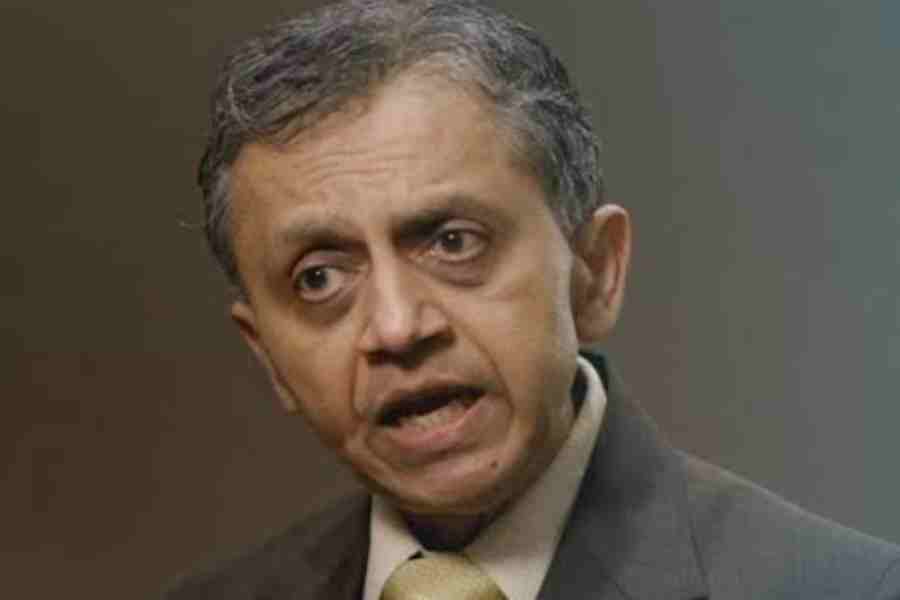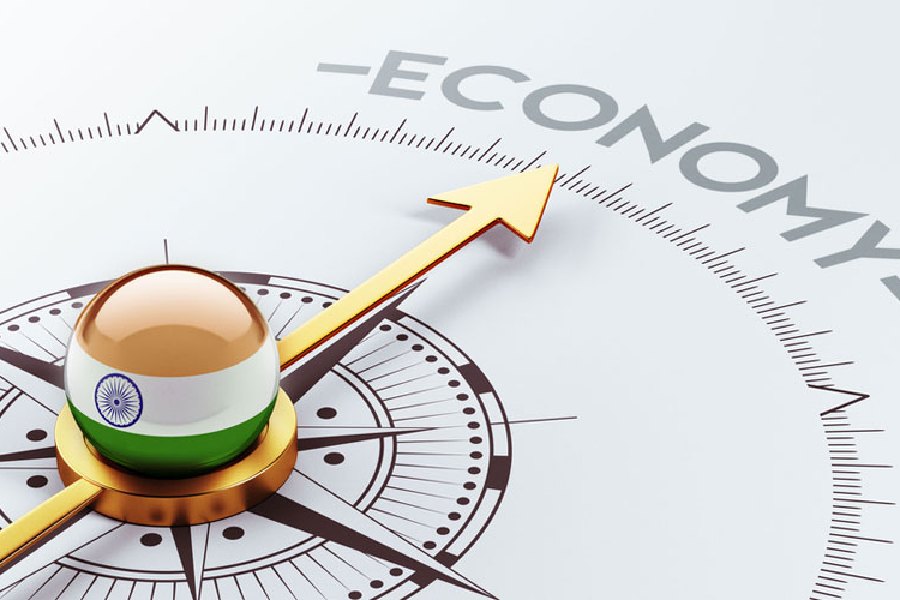The Narendra Modi dispensation’s claim that India is the fastest-growing economy in the world has come under stress.
Ashoka Mody, a visiting professor of economics at Princeton University who bears a homophonic variant of the Prime Minister’s surname, claims that the National Statistical Office (NSO) has got it wrong when it says that India’s GDP growth in the first quarter (April-June) amounted to 7.8 per cent.
The professor, an alumnus of Delhi’s St Columba’s School where he studied in the early seventies, argues that it ought to be 4.5 per cent, sparking embarrassment for the Modi government before the world’s leaders descend in Delhi for the G20 Summit that starts this weekend.
In an article written for the Project Syndicate and titled “India’s Fake Growth Story”, Mody proceeds to question what he terms as his namesake’s “carefully curated image of a rising India”. The Project Syndicate is an international media organisation that publishes and syndicates commentary and analysis on a variety of global topics.
The “fudge” arises because the NSO doesn’t follow the international practice of providing a composite figure when the two yardsticks for measuring the GDP throw up vastly different numbers.
The NSO measures the real GDP in two ways: first through the production/income approach and then through the expenditure approach.
There is commonly a difference between the two numbers and the NSO balances the two by bunging in the difference as a sum under head Discrepancies in its expenditure-based estimation of the GDP.

Mody, who has had long stints as an economist at the World Bank and the International Monetary Fund, writes: “In principle, expenditure should equal income earned, because producers can earn incomes only when others buy their output. In practice, however, estimates of income and expenditure differ in national accounts everywhere, because they are based on imperfect data.
“Typically, this discrepancy does not matter for calculating growth rates, because income and expenditure, even if they differ somewhat, have similar trends.”
Mody adds: “But every now and then, the two series follow very different paths, with hugely consequential implications for evaluating economic performance.”
But this year there is a problem, says Mody, because income from production rose by an annualised 7.8 per cent rate in April-June while expenditure went up by a modest 1.4 per cent.
Mody believes that the NSO needs to reconcile the two figures when the growth trajectories are so vastly different.
“This is an obvious violation of international best practice. The entire point of the discrepancy line is to acknowledge statistical imperfections, not to make them disappear. The NSO is covering up the reality of anaemic expenditure at a time when many Indians are hurting, and when foreigners are showing only a limited appetite for Indian goods,” the professor writes.
Mody is somewhat of a trendsetter. After graduating from IIT Madras with a BTech degree in electronics, he went on to study economics at the Centre for Development Studies in Thiruvananthapuram where he obtained an MPhil before completing his PhD in economics at Boston University.
He says: “The proper approach is to recognise both income and expenditure as imperfect macroeconomic aggregates, and then to combine them to assess the state of the economy. Hence, the Australian, German, and UK governments adjust their reported GDP using information from both the income and expenditure sides.”
He goes on to write that the US uses expenditure as its “primary metric of economic performance (unlike income in India)”.
“The US Bureau of Economic Analysis accounts for the often sizable difference between income and expenditure by reporting the average of the two as its composite measure. When we apply the BEA method to Indian data, the most recent growth rate falls from the headline 7.8 per cent to 4.5 per cent -– a marked decline from 13.1 per cent in April-June 2022, when the post-COVID-19 rebound first triggered the current wave of India hype,” the professor argues.
Not many economists are ready to embrace Mody’s radical, slogan-busting argument.
“India has been following the UN System of National Accounts 2008 and the problems with the quarterly growth data are not something new and not specific to India alone. The quantification of growth on a quarterly basis has its own risks,” says N.R. Bhanumurthy, vice-chancellor at Dr BR Ambedkar School of Economics University, in Bangalore.
“The quarterly GDP is based on several leading indicators which show a robust trend. However, the projections should be read with a grain of salt. The actual growth numbers could be seen after the final revision of the annual GDP numbers,” he adds.
Soumya Kanti Ghosh, chief economist at State Bank of India group, said in a recent Ecowrap report that there were possible fault lines in the NSO’s data methodology with respect to manufacturing, exports and the service sector vis-à-vis leading indicators in the niche sectors. The report also wondered whether there was a need to rethink and revisit the interpretation of the first quarter GDP data.
Data from different economies indicate that the gap between the GDP and the GNI (officially known as “the statistical discrepancy”) is typically about 1 per cent. This discrepancy has been growing in several economies including the US.
The GDP is the total market value of all finished goods and services produced within a country in a set time period. The GNI is the total income received by the country from its residents and businesses regardless of whether they are located in the country or abroad.
“A gap in GDP & GNI indicates that the country is net receivable or net payable. An average gap between GDP & GNI was around 1.1% per cent during FY12 to FY20. However, this gap increased marginally to 1.3 per cent in FY21 and then significantly to 2.0 per cent in both FY22 & FY23,” the SBI Ecowrap report said.











